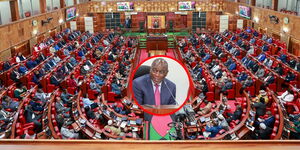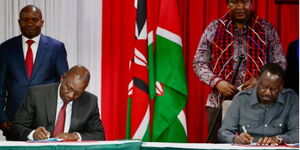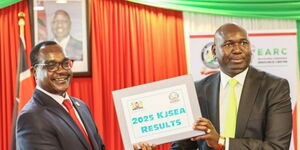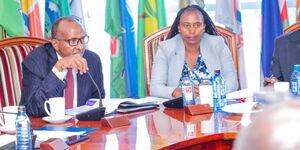President William Ruto sought to clarify every plan the government was yet to roll out, following pressure from enraged Gen Z over the Finance Bill, widely reported as controversial for its proposed punitive taxes.
The head of state later opted to withdraw the Finance Bill during a press conference on 27th June 2024, following deadly protests that saw Parliament and the Judiciary set ablaze.
In response to the ensuing demonstrations, Ruto, for the first time, utilized various platforms to articulate and elaborate on the government’s intentions.
The Finance Bill became the central topic of discussion across Kenya, capturing the attention of individuals and businesses alike and prompting the head of state to provide clarifications.
During a session on social media platform X with young Kenyans on 5th July 2024, Ruto addressed details concerning the Finance Bill, funding allocated for cancer treatment under Universal Health Care (UHC), the Hustler Fund, and the appointment of judges, among other issues.
President William Ruto chairs a Cabinet Meeting at State House on Thursday, June 13, 2024.
PCS
Kenyans.co.ke did extensive research through the government's publicly available reports and other sources to establish various claims from the X space conversation.
Claim 1: On Increasing Land Rates
Ruto said "The Finance Bill was a big thing of many falsehoods and propaganda. The bill has something about increasing Land Rates - there is not a single sentence on Land Rates."
Verdict: Correct.
The Finance Bill had no mention of land rates.
Clarification.
The Land Act amendment bill, sponsored by Ruiru Member of Parliament Simon King'ara, coincided with the Finance Bill 2024.
The Bill proposed to amend the Land Act 2012 to enable the government to levy annual charges on freehold landowners.
It sought to amend the Land Act by inserting a new levy after section 54, requiring freehold landowners—those who hold perpetual ownership and unrestricted use of their property—to pay land rent.
"The Land Act 2012 is amended by inserting the following new sections immediately after Section 54 (the owner of any freehold land situated within the boundaries of any urban area or city shall pay an annual land levy equivalent to land rent charged on a comparable leasehold land or property of the same size in the same zone."
This would have seen owners of freehold land within or close to urban areas pay an annual land levy in addition to normal land rates. Among those who were to feel the pain of additional levies were homeowners on ancestral land on the fringes of the city.
The National Assembly Majority Leader Kimani Ichung'wah withdrew the controversial Land Bill. In a letter dated June 13, Ichung'wah informs the speaker that the withdrawal is informed by constitutional and legal issues that arose from the Bill.
National Assembly Majority Leader Kimani Ichung'wah addresses a crowd during an event in Kirinyaga County on March 18, 2023.
Photo
Kimani Ichung'wah
Ichung'wah said that the executive had advised on the need for the ensuing issues to be addressed and resolved before further consideration.
Its withdrawal coincided with the government's backtracking on the Finance Bill after countrywide protests.
Claim 2: On Appointment of Judges
"I have sworn in 46, almost 50 judges."
Verdict: Incorrect
The publicly available details from the Judiciary Service Commission (JSC) official website show that President Ruto has appointed 26 judges both in the High Court and in the Court of Appeal.
Clarification
President William Ruto, on his first day in office, ordered the swearing-in of 6 Judges recommended for appointment to the Court of Appeal and Environment and Land Court by the Judicial Service Commission (JSC) three years ago during the tenure of the previous regime.
On 7 December 2022, 20 High Court judges were sworn in and oriented to their new roles during an induction conducted by the Kenya Judiciary Academy (KJA).
This brings the total number of judges sworn in since Ruto clinched the Presidency to 26 judges.
Claim 3: On Hustler Fund
"Many people have spread this story about William Ruto not telling the truth. I told people there will be a Hustler Fund, today there is a Hustler Fund."
Verdict: Correct
Hustler Fund exists.
Clarification.
The Hustler Fund, as described by the Kenyan government, is a digital financial inclusion initiative designed to enhance financial access by providing responsible finance to individuals and micro, small, and medium-sized enterprises (MSMEs) across Kenya.
The loan is currently operational.
Kenyans.co.ke moved to establish this by dialling USD code *254#, and a prompt popped up commissioning the users to select one of the three categories: Hustler Fund, Women Enterprise Fund, and Hustler Groups.
Under Hustler Groups, there are Groups Micro Enterprise Loan Products (GMELP) and Individual Micro Enterprise Loan Program (IMELP)
As of 8th July 2024, the kitty had already disbursed close to Ksh 53 billion (52,945,855,160) in over 23 million borrowers (23,293,402).
The Government established the fund to alleviate financial constraints, particularly within the informal sector.
However, Auditor General Nancy Gathungu raised concerns over the management of the Hustler Fund.
Auditor General Nancy Gathungu speaking during the sensitisation Forum on the Auditor General's PFM framework tool on September 4, 2023.
Photo
OAG
Gathungu highlighted that Hustler Fund Management failed to provide financial statements for audit review, which prevented verification of the source and authenticity of the balances.
In the report, the Auditor General pointed to doubts surrounding the recovery process from exchange transactions.
The report revealed that close to 18 million (17, 855, 858) beneficiaries applied for loans leading to a total of Ksh32 billion (Ksh32, 015, 962, 276) cash disbursed. A balance of about Ksh11 billion (Ksh 10,950,075, 614) remained unpaid as of June 2023.
The report also revealed that Ksh259, 026, 553 held by service providers could not be accounted for due to inadequate documentation provided by the fund’s management.
From the report, 11, 213 borrowers received additional loans totalling Ksh161,931,703 before fully repaying their previous obligations.
Claim 4: On Taxing Cancer, Hypertension & Lifestyle Diseases
"There were no taxes for people suffering from cancer."
"We had put Ksh2 billion for people with Cancer and hypertension under universal healthcare."
Verdict:
Statement One: Correct
Statement Two: Cannot be Substantiated, Documents not in Public Domain
Ruto's statement encompassed elements from various categories. Here's the breakdown:
In Kenya, patients do not directly pay taxes. However, under the previous healthcare financing model involving the National Health Insurance Fund (NHIF) and the new model with the Social Health Insurance Fund (SHIF), subscribers contribute monthly and annual subscriptions, which are not classified as taxes.
A review of the Office of the Controller of Budget's report for the first nine months of the 2023/2024 financial year reveals that out of the allocated Ksh3.95 billion for Universal Health Coverage (UHC), Ksh3.045 billion had already been utilized, leaving a balance of Ksh905 million for recurrent expenditure. Contrary to President Ruto's claim of Ksh2 billion in the UHC fund, this remaining amount does not align with his stated figure.
From the Finance Bill, there were claims that taxes would be imposed on Medicare and that there would be taxation on recurring diseases such as cancer and other chronic diseases. Kenyans.co.ke sought to find out and establish the claim. The Finance Bill did not capture any statement on taxation of recurring diseases.
Speaking during an interview on 12th June, Timothy Olweny, Chair of Social Health Authority, a subsidiary of the Universal Health Coverage, could not give a guarantee of the funding.
Social Health Authority Chairperson Timothy Olweny
Photo
Spice FM
"I cannot guarantee because that is not within my mandate. All I know is that money has been promised, it has been budgeted for as far as I am concerned, those are the figures we are working with."
Cancer and Hypertension lie within the Emergency Chronic and Critical Care Fund. Speaking during the same interview, Olweny quoted Ksh75 billion as the money allocated for chronic and critical illnesses. This amount is more than the Ksh2 billion quoted by President Ruto.
From the recent economic survey report 2024, The National Government expenditure on health services almost doubled from Ksh88.1 billion in 2022/23 to Ksh161.8 billion in 2023/24. All reports seen by Kenyan.co.ke have not specified any amount set specifically for cancer and hypertension.
The membership of the Universal Health Coverage has increased by 2,577 to 904,205 in 2024.
Claim 5
"I went there in person and committed close to Ksh 400 million to attend to those affected by the flooding. Maybe I should have done more."
"It was the first time the Govt was allocating money to assist those affected by the floods."
Verdict
First statement: Correct.
Second statement: Incorrect.
Clarification.
President Ruto on a Twitter space with Gen Z claimed that the government had set aside Ksh400 million to cater for those affected by floods in Nairobi.
Ruto announced that the money was aimed at easing the financial burden and helping families in their recovery process, especially those displaced from their houses.
Giving Ksh10,000 to each of the 40,000 displaced families during the recent floods in Nairobi totals Ksh400 million.
This isn't the first instance where the government has allocated funds to assist those impacted by floods. In May 2022, a legal notice issued by the then Treasury Cabinet Secretary Ukur Yatani authorised funds for disaster management, which encompassed provisions for floods.
The notice specified financial allocations for annual estimates, disaster response, and recovery funds based on the severity of the disaster.
Treasury CS Ukur Yatani addresses the media on November 25, 2020, in Nairobi
Twitter












